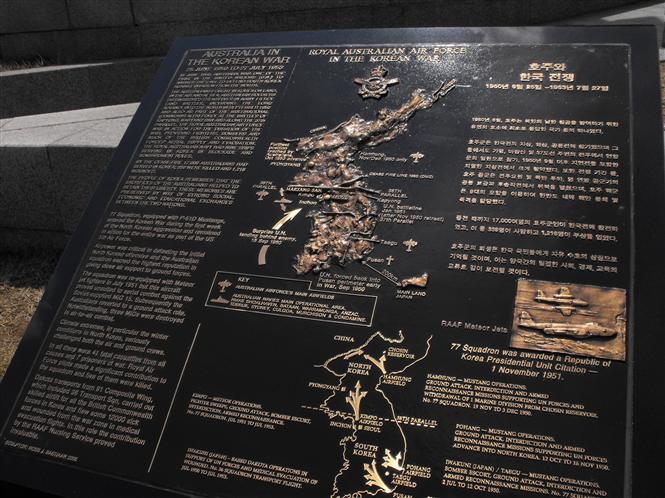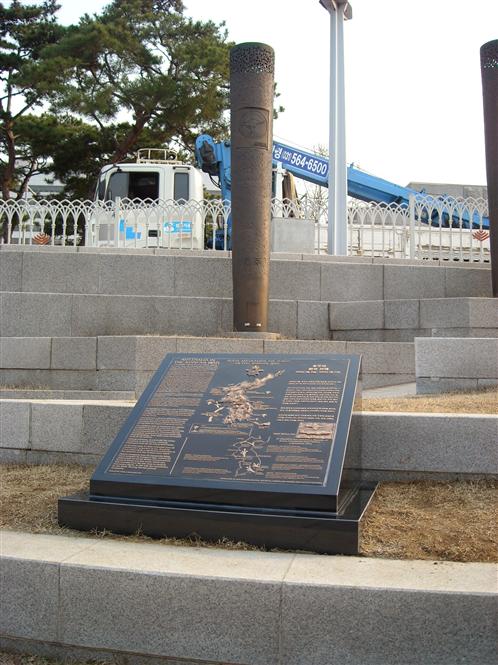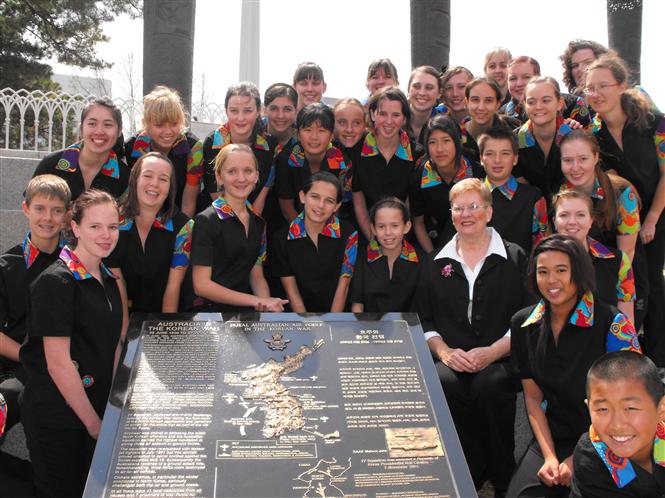Royal Australian Air Force Korean War Memorial Plaque
Description
A bronze plaque mounted on a concrete plinth.
History
The war in Korea began on 25 June 1950 when North Korea, under the leadership of Kim Il Sung, invaded South Korea with the aim of unifying the country under communist rule. The North Korean People’s Army were confident that the war would be a short one having a much larger army force, far superior equipment and the support of the Soviets. Initially everything went according to plan and within three days they had captured the South Korean capital of Seoul. The North Koreans and the Soviets had, however, misjudged the American reaction to the invasion and within 24 hours of the attack President Harry S. Truman decided that the United States would intervene on the side of South Korea.
The Royal Australian Air Force (RAAF) began its involvement in the Korean War on 2 July 1950. No. 77 Fighter Squadron, based in Japan as part of the British Commonwealth Occupation Force, was the only RAAF combat squadron committed to Korea by the Australian Government. As a unit of the United Nations Command (UNC) they were initially tasked with escorting American bombers and carrying out low-level air strikes, attacking bridges, railway lines and other targets in an attempt to slow down the North Korean advance. The Australians quickly developed a reputation for excellence in the ground attack role, flying up to six combat missions in a day.
In October 1950, all RAAF units attached to the UNC were grouped into the newly formed No. 91 Composite Wing which remained based in Japan. No. 30 Communications Flight, redesignated to No. 30 Transport Unit then, in 1953, upgraded to No. 36 Transport Squadron, provided a link between the Squadron in Korea and the Wing in Japan, carrying troops and supplies in and evacuating the wounded. No. 491 Maintenance Squadron had a servicing section attached to No. 77 Squadron in Korea to allow for maintenance work in the field. 391 Base Squadron, working closely with 491 Maintenance Squadron, maintained, repaired, and, if necessary, replaced RAAF aircraft.
Personnel from both the Royal Australian Army Nursing Corps and the Royal Australian Army Medical Corps also served with distinction. In addition to regularly taking part in medical evacuation flights from Korea to Japan, a small number of them also served in the British Commonwealth Communications Zone Medical Unit in Seoul.
Most RAAF units returned to Australia in late 1954 and early 1955 with the exception of a small unit from No. 36 Transport Squadron, left behind to form the RAAF Transport Flight Japan, maintaining a regular service between Japan and Korea carrying people, mail and freight until the unit returned to Australia in June 1956.
By the time the Armistice was signed on 27 July 1953, No. 77 Squadron had flown 18,872 sorties with a loss of 40 pilots killed in action and six becoming prisoners of war.
Australian Forces Total Casualties: 340 died / 1,230 wounded.
Construction Information
The plaque, arranged by Dr Ross Bastiaan, was originally on display in a cabinet inside the War Memorial of Korea. The plaque has recently been moved and mounted on a plinth within the grounds of the War Memorial. It was unveiled on 13 April 2010 by the Australian and Korean Air Force Chiefs, assisted by the War Memorial Director and the Australian Ambassador to Korea.
Location
8 Yongsan-dong, Yongsan-gu, Seoul, Korea.
The memorial is located within the grounds of the War Memorial.



